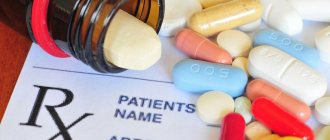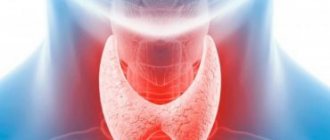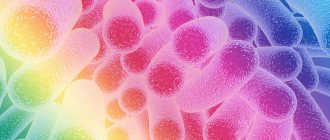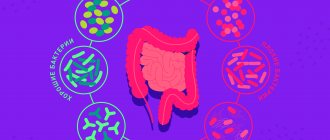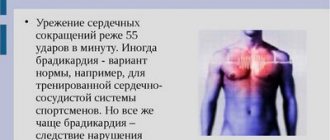Diseases of the gastrointestinal tract are usually associated with problems in the functioning of other systems of the human body. They are accompanied by unpleasant, painful symptoms and require urgent treatment.
Every person always wants to be healthy, full of strength and enjoy all the delights of life. However, unfortunately, recently there has been a trend towards the development of diseases of the gastrointestinal tract all over the world.
According to scientists, the reason for this is poor nutrition, regular stress, environmental problems and many harmful substances that surround us constantly.
The main task of the digestive system is to perform vital functions in our body. Life without it is absolutely impossible, since due to its basic processes (digestion of the nutrients received and their absorption), a person receives the necessary energy for work and rest. The stomach and intestines are the main organs of digestion, the activities of which are associated with both the initial and final stages of the entire digestive tract. If your stomach and intestines are healthy, they will never let you down.
It is worth noting that the human digestive system is quite sensitive. It immediately reacts to any, even minor changes, both in the internal environment of the whole body and in the entire external world, leading to various diseases of the gastrointestinal tract. They cause a lot of discomfort to the patient: discomfort and pain.
What is the gastrointestinal tract (GIT)
In order to understand the principle of the gastrointestinal tract, you must first understand what it actually is. The gastrointestinal tract is a system of organs whose purpose is to process and extract from food all the nutrients the body needs, assist in the absorption of the resulting beneficial substances into the blood, and also remove food debris that has not been completely digested from the body.
The entire gastrointestinal tract in the body is represented by a continuous tube that connects the oral opening to the anal opening. Food masses move along it in the caudal direction, which in the process of movement are split into smaller particles suitable for absorption.
For example, the average length of the gastrointestinal tract in an adult male reaches 6.5 meters.
Diseases of the gastrointestinal tract are a group of diseases that affect this anatomical region. All pathologies are divided into several main groups, among which are:
- by the nature of development, infectious and non-infectious;
- according to the location of the disease: small intestine, large intestine, stomach or esophagus;
- acquired and hereditary diseases.
Inflammatory bowel disease (IBD) is a chronic inflammatory process involving the entire intestine or part of the gastrointestinal tract (GIT). This usually leads to abdominal pain and diarrhea, and sometimes extraintestinal symptoms may occur: inflammation of the joints, skin rashes, inflammatory eye lesions.
The causes of this pathology are still not precisely known, although the involvement of the immune system and genetic factors is assumed.
The main inflammatory bowel diseases are ulcerative colitis (UC) and Crohn's disease.
They also include collagenous and lymphocytic colitis, but they are usually considered separately from the main types of IBD.
The course of IBD can be long and debilitating; in addition, life-threatening complications sometimes occur: bleeding, the development of an oncological process, inflammation of the abdominal cavity due to intestinal contents entering it through a defect in the intestinal wall.
Drug therapy is often successful, leading to the disappearance of symptoms for a long time. If it is ineffective, surgical treatment is performed.
Synonyms Russian
IBD.
English synonyms
Inflammatory bowel disease, IBD.
Symptoms
Manifestations of the disease depend on the severity of the process and its location. In addition, there are periods of remission (complete disappearance of symptoms) that last for months or even years.
The most common symptoms of IBD are:
- chronic diarrhea with blood in the stool, sometimes mucus,
- abdominal pain, possibly cramping in nature,
- intestinal bleeding (more typical for Crohn's disease),
- feeling of incomplete bowel movement and false urge to defecate,
- anal fissures (characteristic of ulcerative colitis),
- fistulas (pathological passages connecting the intestine with the external environment or with another intestine in the wrong place; typical for Crohn's disease)
In addition, there are a number of extraintestinal symptoms:
- general weakness and malaise,
- temperature increase,
- loss of appetite and body weight,
- anemia due to bleeding and impaired iron absorption.
Sometimes joint pain, inflammatory eye lesions, red, bumpy, painful rashes appear on any part of the skin.
General information about the disease
Inflammatory bowel diseases are chronic, recurrent diseases that affect the gastrointestinal mucosa.
Currently, the cause of IBD is not completely known. They are believed to be mainly caused by:
- disorders in the immune system, leading to its increased activity and excessive production of antibodies (protective factors) against cells of the own mucous membrane,
- genetic factors, which is why people whose relatives had it are more susceptible to IBD.
Additionally, stress and dietary patterns may increase the risk of IBD.
The main forms of this pathology are ulcerative colitis and Crohn's disease. In ulcerative colitis, the pathological process is localized in the colon, the inflammation is continuous and affects only the upper layers of the mucous membrane, without penetrating deep into the tissue.
In Crohn's disease, any part of the gastrointestinal tract can be affected, from the oral cavity to the rectum; inflammation penetrates deep into the tissue and is characterized by segmental damage to the mucous membrane.
Chronic inflammation leads to impaired digestion and absorption of nutrients (malabsorption), as a result of which the level of microelements, glucose, protein, and vitamins in the blood decreases, which can cause depletion of the body.
Who is at risk?
- Persons whose relatives suffered from inflammatory bowel diseases.
- Young people under 30 years old.
- Smokers (smoking negatively affects the course of Crohn's disease, but quitting it can provoke its exacerbation).
- People who frequently take painkillers (non-steroidal anti-inflammatory drugs) such as ibuprofen, naproxen, aspirin.
- Residents of megacities.
Diagnostics
If you have symptoms of inflammatory bowel disease, especially frequent, loose, bloody stools or severe abdominal pain, you should consult a doctor.
The electrolyte composition of the blood may change, the level of total protein, glucose, and vitamins may decrease. In a general blood test, a decrease in hemoglobin is likely, indicating the development of anemia and/or an increase in the level of leukocytes, which indicates an infection.
A stool examination is also used to detect digestive disorders and invisible amounts of blood in the stool.
The doctor may prescribe an X-ray or endoscopic examination of the intestine, the latter allows you to take a biopsy (a piece of intestinal mucosa) for examination under a microscope, which often helps to make a final diagnosis.
Treatment
The basis of treatment is the prescription of drugs that suppress the activity of the immune system. The synthesis of antibodies to the intestinal mucosa and the activity of inflammation are reduced.
If there is no effect of therapy, a consultation with a surgeon is necessary to decide on surgical treatment.
Recommended tests
- Complete blood count (without leukocyte formula and ESR)
- Serum albumin
- Total protein in whey
- Serum iron
- Potassium, sodium, chlorine in serum
- Serum calcium
- Plasma glucose
- Diagnosis of inflammatory bowel diseases (antibodies to intestinal goblet cells and pancreatic ducts)
- Coprogram
- Histological examination of biopsy diagnostic material
Causes of gastrointestinal diseases
The main reasons for the development of diseases of the gastrointestinal tract include: improper diet or its complete absence, strict diet or overeating, various stressful situations, infections, sedentary lifestyle and others.
For example, Tibetan medicine views the human body as something holistic, interconnected and absolutely indivisible. Here we highlight another reason for problems with the gastrointestinal tract, namely problems in the functioning of other systems of the human body. For example, the health of the spine is reflected in the functioning of all digestive organs.
Absolutely all internal organs are internalized by nerves that emerge from the spinal canal. Any organ can function fully only if nerve impulses flow to it unhindered. A disease such as osteochondrosis pinches nerve endings and thereby slows down and even prevents the normal passage of impulses.
Because of this, the stomach becomes sluggish, and the smooth muscles of its walls become more relaxed. In case of prolonged disruption of innervation, the stomach descends. Moreover, sluggish and weak muscles of the gastrointestinal tract are one of the reasons for poor digestion of food.
In turn, poorly digested food is not able to fully nourish the body and thereby disrupts the functioning of other important body systems. Improper functioning of the gastrointestinal tract also manifests itself in the form of decreased immunity, skin damage and metabolic disorders.
The main symptoms of diseases of the digestive system:
- Pain in the abdomen, both of different localization and of varying intensity;
- Belching and heartburn;
- Nausea and vomiting;
- Stool disorders;
- Flatulence and rumbling in the stomach;
- White coating on the tongue;
- Rapid weight loss;
- An aversion to certain foods that were previously favorites, or a complete lack of appetite.
Colon diseases
Proctology
– a special section of gastroenterology, dealing with preventive, therapeutic and diagnostic issues of diseases of the large intestine, anus and pararectal space. The most common diseases encountered in proctological practice are inflammatory diseases of the large intestine and disorders of its motor function. Benign neoplasms, as well as malignant oncological diseases of the large intestine, are not uncommon. A feature of the course of many proctological diseases is the presence of a rather long latent low-symptomatic period.
The total length of the large intestine is from 1.5 to 2 meters. It accumulates food debris, mucus, microbes, dead cells of the mucous membrane and the formation of feces occurs. The large intestine includes the cecum, colon (ascending, transverse and descending), sigmoid and rectum. The final part of the rectum ends with the anus, which is surrounded by adirectal tissue. Various lesions of this large area of the digestive tract make up a large group of diseases that are treated by proctologists.
The most common causes of proctological problems are constipation, a sedentary lifestyle, dietary habits (abuse of spicy, starchy, fatty foods, alcohol), pregnancy and childbirth, stress, congenital malformations, and trauma. They lead to inflammation of the intestine, disruption of its motor function and microflora, trauma to the mucous membrane, and dilation of the veins of the distal intestine. This is how diseases of the colon, rectum, and anus arise: colitis, cryptitis, papillitis, paraproctitis, anal fissures, hemorrhoids, dysbacteriosis, polyps and condylomatosis of the rectum and anal canal, epithelial coccygeal tract, etc.
Common manifestations of proctological diseases are abdominal pain, discomfort and itching of the anus, diarrhea or constipation, proctalgia, blood in the stool, mucopurulent discharge from the anus.
The delicacy of the problem and the feeling of shame leads to the fact that many patients prefer to endure for a long time and do not seek medical help. Meanwhile, proctological diseases cause physical and psychological discomfort and can lead to serious damage to the body as a whole. The most dangerous consequences of diseases of the colon, rectum and anus are the involvement of the organs of the genitourinary system and the upper digestive tract in the pathological process, and purulent-septic complications. Many proctological diseases serve as a background for the development of malignant neoplasms. Therefore, a visit to the proctologist should be made when the first suspicious symptoms appear.
Modern proctology uses highly accurate and safe diagnostic techniques that allow the doctor to make the correct diagnosis: digital examination of the rectum, instrumental endoscopic methods (colonoscopy, sigmoidoscopy, anoscopy), X-ray examination (irrigoscopy), clinical and bacteriological laboratory methods (blood tests, coprogram, tumor biopsy and tissues), computed tomography and magnetic resonance imaging. Many diagnostic methods require special preparation of the large intestine, freeing it from feces by performing a cleansing enema or taking a laxative.
Treatment of proctological diseases is based on an integrated basis. It includes therapeutic nutrition, physiotherapeutic, psychotherapeutic procedures, antibacterial therapy, and, if indicated, surgical intervention.
Useful information contained in the proctology section of the Medical Directory of Diseases will help you protect yourself from proctological problems.
If the diseases have already arisen, then you can choose the right clinic and proctologist on our website “Beauty and Medicine”. Further…
Diagnosis of gastrointestinal diseases
Today, thanks to technological progress in modern gastroenterology, a thorough diagnosis of all organs of the gastrointestinal tract is possible. It consists of:
- Ultrasound - ultrasound examination;
- FGDS and irrigoscopy – endoscopy of the gastrointestinal tract;
- intragastric pH-metry;
- manometry of all digestive organs;
- electrogastroenterography;
- radiology diagnostics;
- biopsies.
Treatment, as well as diagnosis of any gastrointestinal diseases, is recommended to be carried out exclusively by a qualified gastroenterologist. This will help minimize discomfort.
We care about your health
Diseases of the large intestine do not always manifest themselves clearly and clearly. More often than not, the initial phase is accompanied by vague symptoms that people do not attach importance to. This may be a burning sensation, discomfort in the intestines, and periodic mucus discharge. The specificity of the intestines is that for a long time it may not give such signs that would indicate the need to visit a proctologist. Even when a person begins to be bothered by pain, bloating, discharge from the anus and other symptoms, he does not rush to see a doctor. At first, the patient persistently tries self-medication and those remedies that modern advertising intrusively offers. Meanwhile, the symptoms change, become more noticeable, painful and often aggressive.
Sometimes the symptoms may not indirectly indicate intestinal diseases; the symptoms may be specific:
- sudden weight loss;
- weakness in the body;
- disturbances in metabolic and hormonal processes;
- hair loss.
These signs accompany the most severe intestinal lesions: cancer, malignant tumors, polyposis. The intestine is the only organ that simultaneously belongs to two important systems of the body: the immune and gastrointestinal tract. For a full life and health, it is important to be able to recognize those symptoms and signs that indicate a pathological process in the large intestine:
- constipation;
- pain of varying intensity in the abdomen;
- bleeding during bowel movements;
- discharge of clear or purulent mucus;
- anemia;
- flatulence;
- intestinal obstruction;
- stool disorder;
- tenesmus;
- incontinence.
Intestinal constipation With constipation, difficulties with defecation are observed, up to the complete exclusion of stool for several days. Constipation can be constant and persistent and not respond to the effects of laxatives. An upset bowel movement can be replaced by constipation - this is a common picture with irritable bowel syndrome, dysbacteriosis, and functional disorders. The intensity of pain depends on the type of constipation: atonic and spastic. In the first case, the pain is aching, often not aggressive. With spastic constipation, there may be persistent pain in the groin area. The presence of frequent constipation indicates the possibility of fecal impaction or intestinal obstruction. The conditions are extremely dangerous in nature and can threaten life.
Abdominal pain Pain in the abdomen and groin often accompanies organic and functional disorders in the large intestine. Thus, with Crohn's disease and ulcerative colitis, the pain is in the nature of spastic contractions. Such pain often radiates to the lumbar region and radiates along the outside of the legs. It is difficult to determine the locality, since the pain “spreads” across the lower abdomen, often involving the perineum in the process.
Constant pain is a sign of a progressive inflammatory process. Such pains are aching, pulling, persistent. Manifested in IBS, various colitis, diverticulosis. The nature of the pain indicates the likelihood of developing peritonitis or a purulent lesion.
Bloody discharge and bleeding Bleeding occurs in diseases of the rectum and colon. Usually, the location of the lesion is visually determined by the color of the blood: the brighter the blood, the closer to the exit the lesion is. Thus, the appearance of clear and bright scarlet blood indicates internal or external hemorrhoids. Sometimes blood loss can be significant and cause weakness and dizziness.
If the stool is homogeneous and contains uniform bloody impurities, then this is a symptom of the formation of a tumor in the upper intestines. Sometimes such masses occur with nonspecific colitis and diverticulosis. The higher the lesion is, the more uniform the blood clots in the stool will look and the darker their color.
In Crohn's disease, blood may be released in pure form or in large clots. In some cases, scarlet blood may be a sign of a disintegrating tumor in the intestine.
Discharge of mucus or pus Such discharge is either constant or appears during bowel movements. Most often this becomes a sign of the formation of a fistula in the anus. With constant mucus secretion and pain, sphincter insufficiency can be assumed. In this case, numerous erosions and cracks form, which causes itching and pain.
Such discharge is characteristic of irritable bowel syndrome, proctitis, and the formation of tumors in the sigmoid colon. Often the discharge is combined with blood and the appearance of clots.
Pain in the anus Pain can be aching and periodic, bursting in the area of the passage. This happens with deep cracks; they heal with difficulty, especially if there is constipation. Jerking and unbearable pain occurs when hemorrhoids rupture or there are multiple nodes in the intestines. Regular hemorrhoids without complications do not cause such pain; they are only felt as distension and swelling in the anus.
Anemia Anemia develops when a person has lost a lot of blood. This occurs with severe intestinal lesions, cancerous formations, and rapid tumor progression.
Bloating and flatulence Bloating is a common sign for almost any pathology in the gastrointestinal tract. The feeling of bloating and heavy gases is typical with constipation, intestinal obstruction, and fecal impaction. Often flatulence is the result of enzyme deficiency and may indicate disturbances in the functioning of other internal organs. Bloating and flatulence often accompany those who suffer from dysbiosis and eat poorly. In some cases, bloating occurs with a feeling of discomfort and heaviness in the stomach, but with excess gas, severe abdominal pain may occur.
Intestinal obstruction Intestinal obstruction can be complete or partial. More often you have to deal with partial, which is characterized by:
- bloating;
- pain;
- flatulence;
- prolonged constipation;
- the appearance of impurities and blood;
- vomit;
- loss of appetite.
More often this indicates severe damage to the large intestine of organic origin. The condition is extremely painful and dangerous to human health. As it progresses, signs of poisoning of the body and inflammation of the peritoneum appear. With partial intestinal obstruction, stool is rare, scanty, and often replaced by profuse upset. Temporary improvement occurs under the influence of taking laxatives or cleansing enemas.
Stool disorder Diarrhea accompanies milder intestinal diseases, a common sign of dysbiosis. Also, stool disorder can be combined with other symptoms, such as constipation or various discharges. This happens with exacerbation of colitis, IBS.
Tenesmus Tenesmus is a false urge to have a bowel movement. With such urges, a small amount of mucus is released, sometimes along with diarrhea. Tenesmus is usually frequent, persistent, tiring a person with its frequency. Characteristic of excited motility of the rectum, they become a consequence of inflammation of the mucous membrane of the anus.
Incontinence Incontinence of fecal masses of secreted gases manifests itself with congenital or acquired changes in the sphincter. Another reason could be dysregulation due to psychological factors.
